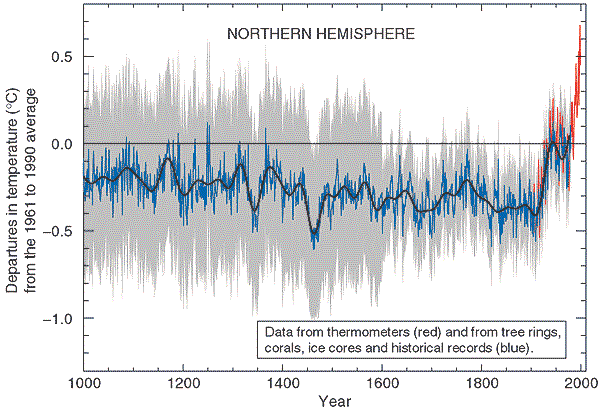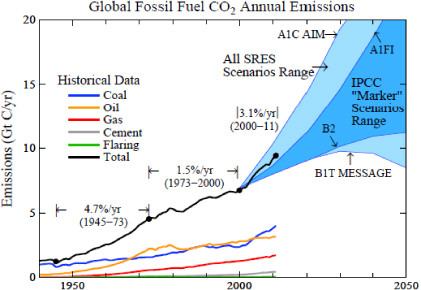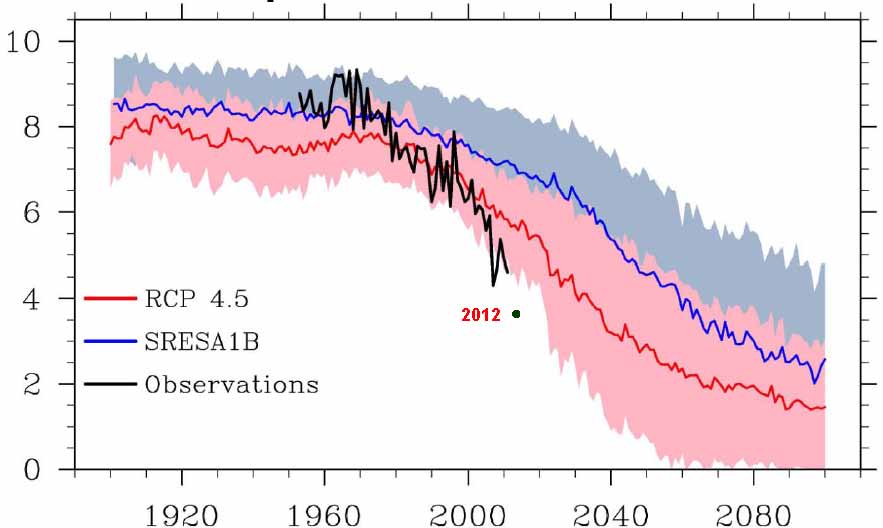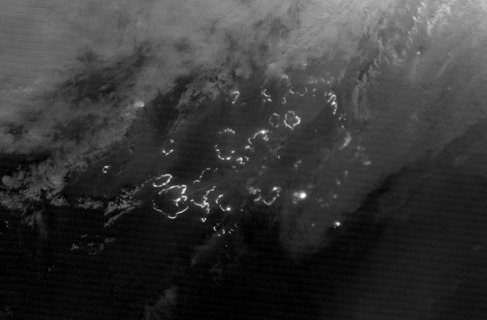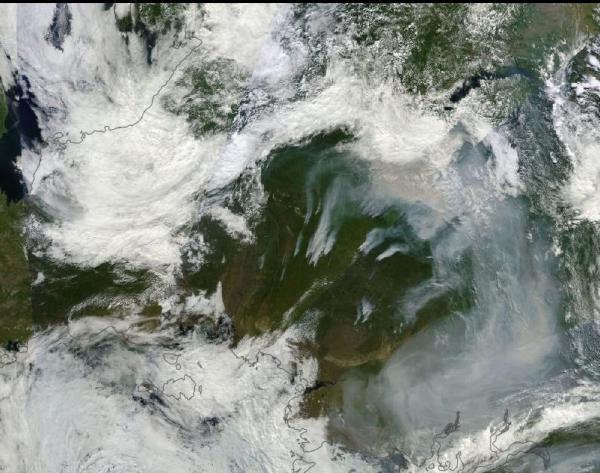American Dreamers
So their eyes are growing hazy 'cos they wanna turn
it on,
so their minds are soft and lazy.
Well, hey, give 'em what they want.
it on,
so their minds are soft and lazy.
Well, hey, give 'em what they want.
10, 000 maniacs
Greetings
Its always nice to get together with friends and family. Talk about traveling, the kids, the grand-kids. The grand-kids are doing well. They're playing soccer and going to a Japanese immersion school !.
(But It's hard to wonder a little, especially once you've taken the red pill. :>)
Can't help wondering about that grandchild. Let's say she is born this year.. What will things look like when she is 16? Will she be driving around like Jim was, enjoying a life of freedom? Perhaps. Perhaps not. Wonder what the weather will be like down in LA? What kind of food will they be serving at Pop Tate's Malt shop? Fish and chips? )
Below a nice piece exploring the psychological aspects of dealing with the future.
"In America, we talk incessantly about our way of life or the American Dream, and with great allegiance and fervor. The stories we tell about ourselves and our way of life—the way we narrate our conscious experience and perception of things—have no place in them for the most basic, and mainly uncontested, facts about energy and the environment."
This dream is supported by the media. the politicians, and the academics. So, who wants to argue? My favorite is the Nobel Prize winning economist who says:
“it is very easy to substitute other factors for natural resources, then there is, in principle, no problem. The world can, in effect, get along without natural resources.”
OK !! Now we're talking!
Read my highlights here, or the whole story below:
--------
......
"Once in a while, this zealously guarded theory of infinite and eternally replaceable natural resources will cross paths with the data linking economic activity with energy use and resource extraction. Consider in this vein the graph below put out in 2009 by The Energy Information Agency, which is the statistical wing of the U.S. Department of Energy, which in turn is torn between providing reliable data, which it does, and supporting an optimistic, pro-business agenda.
The dark blue line on top, which rises slowly from 86 million barrels per day in 2008 to around 105 barrels per day in 2030, represents a bare minimum growth in liquid fuel supply that will be needed to keep the global economy relatively intact. Other projections of liquid fuel needs, like that of the U.S. military, will calculate this probable demand much higher. The colored sections sweeping down to the right represent all known sources of liquid fuels and their expected depletion rates. Along with other analysts, I am at somewhat of a loss to explain the wording used to explain the large blank space standing between demand and supply: Is this a joke or just a bad dream? Is “unidentified” code for “does not exist”? Or is it code for “of coursesomeone will find this if demand remains sufficiently high?” Or is this a Rorschach test against which each may test his or her own cultural expectations? While the fact that this gap will have grown to the equivalent of about five Saudi Arabia’s of oil production within the next fifteen years (and no one thinks that even one more Saudi Arabia even exists) suggests that the authors might be secretly admitting defeat, there is little else in the EIA’s reporting, here or elsewhere, to suggest that preparing for a 43 million barrel a day shortfall should be of wide or urgent concern. At the same time, no real climate scientists believes that life on planet Earth can survive if we don’t drastically reduce our consumption of fossil fuels. A 105 barrel a day diet is a doomsday prophecy, especially since the EIA and other similar agencies also project similar increases in coal and natural gas consumption.
.....
If and when historians look back on our time, the most notable aspect of industrial civilization will not be our political system or our respect of individual dignity. It will not be our love of freedom nor our ingenious hard work. It will not be our technological advances, the dazzling array of amusing gadgetry or load-lightning machinery. It will be the ungodly and unsustainable (and therefore unsustained) amounts of energy that a people gripped by a great and inexplicable fever used and wasted with little thought or concern. How, they will someday ask, could these people not see what was so obvious? How could they prattle on and on about their way of life and the model they present for the rest of the world to follow?
If and when historians look back on our time, the most notable aspect of industrial civilization will not be our political system or our respect of individual dignity. It will not be our love of freedom nor our ingenious hard work. It will not be our technological advances, the dazzling array of amusing gadgetry or load-lightning machinery. It will be the ungodly and unsustainable (and therefore unsustained) amounts of energy that a people gripped by a great and inexplicable fever used and wasted with little thought or concern. How, they will someday ask, could these people not see what was so obvious? How could they prattle on and on about their way of life and the model they present for the rest of the world to follow?
......
.....
The Future of an Illusion

Illusion image via Fran/flickr. Creative Commons 2.0 license.
In Jokes and Their Relation to the Unconscious, Sigmund Freud relates the story of the man accused by his neighbor of damaging a borrowed kettle. As Freud tells it, “A. borrowed a copper kettle from B. and after he had returned it was sued by B. because the kettle now had a big hole in it which made it unusable. His defense was: ‘First, I never borrowed a kettle from B at all; secondly, the kettle had a hole in it already when I got it from him; and thirdly, I gave him back the kettle undamaged.’” As Freud notes, “each one of these defenses is valid in itself,” or rather, I would suggest, is logically coherent; “but taken together they exclude one another.” Not only can they all not be true, the mere articulating of all three reveals a fundamental sort of incoherence that Freud attributes to the unconscious wishes expressed in our dreams or voiced in our jokes. But this sort of thinking also seems to occur when one is straining beyond all rationality to defend a hopeful ideal against the onslaught of reality A. is clearly lying. The remaining question is why he is lying in such an ineffective manner. Perhaps, we might guess, he is lying to himself as much as anyone else. The story gets its humor and provides a moment of recognition, I would suggest, from the fact that we all will hurl such incompatible defenses at a subject when we cannot bear to admit the truth. What makes the story funny is the way A.’s irrationality is presented in a condensed form, while we would be more likely to use one excuse one day, and a different one on another.
Freud’s anecdote may help illustrate the role played by energy or natural resources in the fictions we recite in American and the industrial world about our way of life. The American way of life, its starry-eyed defenders will tell us, is not really dependent on massive amounts of energy or other natural resources; rather, as we have seen, it is based on the American spirit, our traditions, and our freedoms. Yet as part of the same cultural matrix, we are also assured that there is plenty of oil and other fossil fuel to power what is, in fact, the high energy demands of Americans; and finally, in the face of our impending shortage of fossil fuels, certainly, we are reminded, the budding renewable energy sector will bring sufficient amounts of wind, solar, and biofuels on line in a timely manner, while our high-tech computer industry will create a low-energy network of “smart” efficiencies. And so we are told that we won’t run out of current sources, and that there are plenty of alternatives when we do run out, and, in the end, that we don’t actually need all that energy to maintain our way of life, because, in a final twist of heavy-eyed logic, our way of life is so ingenious as to find or create all the resources we need.
It is unusual to hear all three or four of these defenses come out of one person’s mouth in quick succession. But, it seems to me, most Americans have multiple defenses like this, ready-at-hand, whenever the issue of energy or our environmental destruction begins to rise to the surface of our consciousness. Who among us has not, in the face of a particularly disturbing story about global warming, muttered to themselves, “certainly someone will do something to stop this before it is too late,” thus calming the momentary flare up of anxiety. Have we not all warded off a pang of guilt at a wasteful purchase or careless disposal with soothing images of the coming miracle of green technology? If we were really about to run out of oil, the government would tell us, right? Certainly we can live like we do right now with increased efficiencies. Of course wind and solar need just a little more incentive and they too can spark a new energy revolution. Every time someone predicts apocalypse, things turn out okay. Remember what a dud Y2K was? The Stone Age didn’t end because of a shortage of stones, after all! Even the most energy-conscious among us have a repertoire of images of rescue and reprieve which allow us to turn the thermostat a notch higher than we need or buy that unnecessarily large television. In a million little ways, the accumulated messages, the fragments of an idea, the overheard remark, the reassuring voice of the radio whisper to us—“this is okay, this is okay, this is okay.”
At the risk of drawing a closer parallel with Freud’s more technical version of it than I wish, I am proposing, then, that energy isthe unconscious of the American way of life. Energy is there, everywhere; it underwrites everything we do, want, and expect. But it remains absent from our prominent self-descriptions, pushed out of sight by a thousand acts of informal censorship. The middle- class lifestyle in the United States and other “advanced” nations requires unfathomable supplies of finite and rapidly depleting resources for its daily operation. The way that a consumption-driven economic system concentrates waste and hazardous materials is destroying the ecological balance upon which life depends and at an alarming rate, to the point, now where massive extinctions have become commonplace, and where we don’t know where something as basic as water for our food supply will come from in the near future. This prodigious use of energy and production of waste forms the most fundamental conditions of possibility for the American way of life. All that we know and expect, value and demand, are not possible without all this consumption and this waste. If and when historians look back on our time, the most notable aspect of industrial civilization will not be our political system or our respect of individual dignity. It will not be our love of freedom nor our ingenious hard work. It will not be our technological advances, the dazzling array of amusing gadgetry or load-lightning machinery. It will be the ungodly and unsustainable (and therefore unsustained) amounts of energy that a people gripped by a great and inexplicable fever used and wasted with little thought or concern. How, they will someday ask, could these people not see what was so obvious? How could they prattle on and on about their way of life and the model they present for the rest of the world to follow?
It is easy enough to understand how the average American consumer can stumble along unaware of the ecological footprint of his or her way of life. We interact with our natural environment mainly through the medium of money, and the relatively low cost of energy and thus of everything else has done little to cause us much concern. Many of us are shuttled by way of cheap gasoline from climate-controlled house, to an artificially lighted work-place, to a prepackaged supermarket, to a night in front of electronic amusement, and there is little, in all this, to shock one’s level of energy and material use out of the unconscious realm. This, however, is not the case with economists, who must keep track of things like the changing effects of supply and demand. All this leads to some astounding instances of Kettle Logic that would be amusing were its chief proponents not given such power and influence within the modern world. Our prevailing roadmap for the future has been drawn according to an economic paradigm of beliefs and, worse yet, desires.
There is a sense in which all discussions of true sustainability (not the marketing version) either are about economics, or should be. The future of its illusions are at one with the future of humanity; our political and moral choices are often treated as subsets of a greater economic view of things that is mistaken with reality itself. But for now we might simply note a simple incongruity in mainstream economics that no one (but a handful of peak oilers) seems to recognize. On the one hand, all economists know that when economies grow, they need larger supplies of fuel, especially oil. Everyone who thinks about these things is equally aware that nothing lowers demand for oil, and thus lowers its price, like a recession. This sort of knowledge is part of the daily consideration of anyone purchasing stocks, bonds, or commodity futures. As evidence, note the visible handwringing up and down Wall Street or the Capitol Mall the moment some global conflict threatens even a minor source of oil, like the Libyan one, which amounted to a mere 2% of the global supply. In a similar vein, government agencies like the Department of Commerce or Department of Energy that are charged with long-term planning will publicly project that the world production of liquid fuels will, for instance, be required to rise from its current level of 90 million barrels a day to a minimum 110 million barrels a day by 2030 in order to stave-off the sort of economy-destroying recession that still has a partial grip on the world economy today. Every economist and policy-maker understands the dependence of national and global economies on oil.
But, lest we worry too much about where all this oil might come from—or about the fact that another agency of the government charged with thinking about climate change might be printing pamphlets about our imminent decrease in fossil-fuel use—economists will without any apparent sense of contradiction argue that there are no material limits to economic growth. George Gilder may be a bit more colorful than most when he declared that the new “knowledge economy” was about to “overthrow the tyranny of matter,” but Nobel Prizes in economics are regularly handed out to people who proclaim that we need neither oil nor other natural resources to maintain our current trajectory of perpetual and permanent economic growth. As William Bernstein summarizes it in a book about the history of prosperity, “economic historian Simon Kuznets pointed out that a slowdown in economic growth can come from either of the two basic economic sources: supply or demand. He believed that supply, driven by man’s innate curiosity and industry, could not be the source of stagnation. . . . Ecological . . . and demographic forces do not seem likely impediments to growth” (The Birth of Plenty 374). Supply of natural resources, in other words, cannot limit, and therefore by implication cannot really affect, the economy—at least according to a good majority of economists, at least when describing the damaged kettle on one day or another. The job of economists, therefore, is to recommend policies ensuring that demand remains sufficiently high, thus triggering our innate curiosity and industry. This is the centerpiece of liberal economists like Paul Krugman and Robert Reich.
In order to support this view--that there are no ecological limits to growth--one must make some improbable assumptions about resources themselves, the main one being that any resource has a better and cheaper substitute waiting to be found, discovered, or synthesized by next inventive genius. Another Nobel Prize winner, Robert Solow, will thus declare that, since “it is very easy to substitute other factors for natural resources, then there is, in principle, no problem. The world can, in effect, get along without natural resources." This belief that it is so easy to substitute one natural resource for another--to the point, apparently where this substitutional whirl will launch us free from gravity and the Earth itself--has in fact been formalized into “Hartwick’s Rule.” Hartwick’s Rule calculates the amount of investment in capital needed to offset declining stocks of non-renewable natural resources. As Geir B. Asheim and Wolfgang Buchholz explain, Hartwick’s rule is concerned with equality of consumption into the future, showing us how “exhaustible natural resource inputs can be substituted by manmade capital in a way that depleting these natural resources does not harm future generations. Substitutability between natural and manmade capital thus, in spite of the exhaustibility of natural resources, may allow for equitable consumption for all generations” (“The Hartwick Rule: Myths and Facts”). The implication of this rule is that with enough “capital,” this substitution can go on forever and without harming any future generations—never mind where this capital comes from or what it is made of.
We can see this reason-bending fantasy of eternal substitution, supported in many cases by a sort of Kettle Logic, at work throughout the field of economics. It becomes especially apparent whenever someone attempts to summarize the broader view that we don’t need natural resources, or we won’t run out, or that if we do run out, we can just spend more money on their replacements. Face to face with the Kettle Logic, the defense will begin to flounder. Or as economist Zagros Madjd-Sadjadi tries to explain it, “We will never run out of non-renewable resources simply because the price will rise to make extraction cost-prohibitive. At that point, we will have to switch to renewables simply because of the cost. Furthermore, because of those price signals, entrepreneurs will come up with new ways to reduce the use of fossil fuels and other non-renewables.”. If we look closely, we will see that Madjd-Sadjadi is sliding stealthily between two meanings of “run out.” According to the logic of extraction, it is true, the cost of rare and buried minerals or fuels does become prohibitively high before they are entirely depleted. No one will bother to drill 3 miles beneath the North Pole to extract the last barrel of oil. We won’t actually run all the way out of oil, but will leave the last and most expensive oil in place. But the fact that we won’t run out of it or other resources in this, more technical sense, doesn’t mean that we won’t run out in a more practical sense. When they become too rare and expensive to extract, we will have in fact run out in any normal sense of the phrase. Madjd-Sadjadi is hoping that no one, including himself I would imagine, will notice that the logic of resource depletion and the way it shows how we will never “run out” does not makes it inevitable that there will be some equally good renewable that we can “switch to” when the moment arises. Groggy and groping in the dark for some sort of switch, like many economists, he doesn’t seem to entertain the fact that many switches simply toggle between on and off. The whole proposition depends, at any rate, on some sort of quasi-magical belief that high cost itself can reliably synthesize raw materials as some sort of automatic price-generated feverish wish-fulfillment. The American Dream indeed.
Once in a while, this zealously guarded theory of infinite and eternally replaceable natural resources will cross paths with the data linking economic activity with energy use and resource extraction. Consider in this vein the graph below put out in 2009 by The Energy Information Agency, which is the statistical wing of the U.S. Department of Energy, which in turn is torn between providing reliable data, which it does, and supporting an optimistic, pro-business agenda.
The dark blue line on top, which rises slowly from 86 million barrels per day in 2008 to around 105 barrels per day in 2030, represents a bare minimum growth in liquid fuel supply that will be needed to keep the global economy relatively intact. Other projections of liquid fuel needs, like that of the U.S. military, will calculate this probable demand much higher. The colored sections sweeping down to the right represent all known sources of liquid fuels and their expected depletion rates. Along with other analysts, I am at somewhat of a loss to explain the wording used to explain the large blank space standing between demand and supply: Is this a joke or just a bad dream? Is “unidentified” code for “does not exist”? Or is it code for “of coursesomeone will find this if demand remains sufficiently high?” Or is this a Rorschach test against which each may test his or her own cultural expectations? While the fact that this gap will have grown to the equivalent of about five Saudi Arabia’s of oil production within the next fifteen years (and no one thinks that even one more Saudi Arabia even exists) suggests that the authors might be secretly admitting defeat, there is little else in the EIA’s reporting, here or elsewhere, to suggest that preparing for a 43 million barrel a day shortfall should be of wide or urgent concern. At the same time, no real climate scientists believes that life on planet Earth can survive if we don’t drastically reduce our consumption of fossil fuels. A 105 barrel a day diet is a doomsday prophecy, especially since the EIA and other similar agencies also project similar increases in coal and natural gas consumption.
How is it that the leading economists, politicians, journalist, along with most academics, speak matter-of-factly about a future that cannot exists, at least not without the destruction of life as we know it (and with it, as the most tragic collateral damage, our dearly beloved economy)? How is it that this big blank unidentified white space that stands at the center of the American way of life has gone all but unnoticed by anyone who seems to matter? The answer is in some ways painfully simple: obviously the pot already had a hole in it when we borrowed it. Beyond that, we might conclude, our expectations are far more powerful than abstract logic and all the evidence pointing to a frightening and unimaginable future. We value our consumption, or are so afraid to go without it, to the extent that logic, reason, and data are of insignificant mental or emotional consequence. In America, we talk incessantly about our way of life or the American Dream, and with great allegiance and fervor. The stories we tell about ourselves and our way of life—the way we narrate our conscious experience and perception of things—have no place in them for the most basic, and mainly uncontested, facts about energy and the environment. Until we hit rock bottom, perhaps, we will be unable to shake free of the constraints of beliefs and expectations gone wild. I hope we can change stories, and our course, before then--though hope is hard-earned these days.
Labels: Climate Change, grandchidren, Peak Oil, transition

